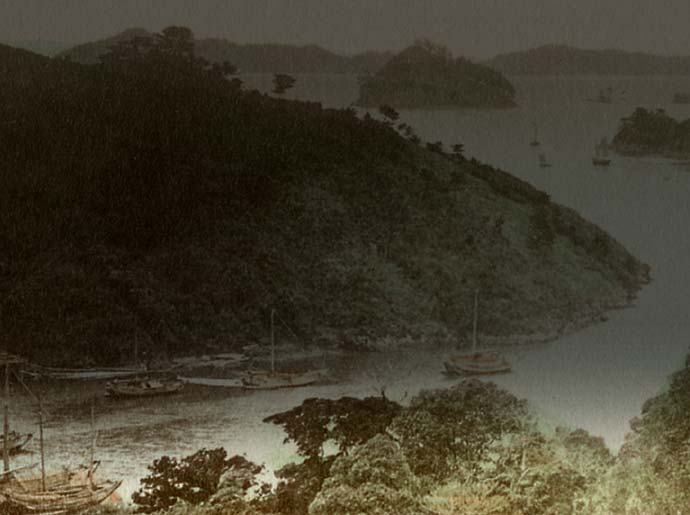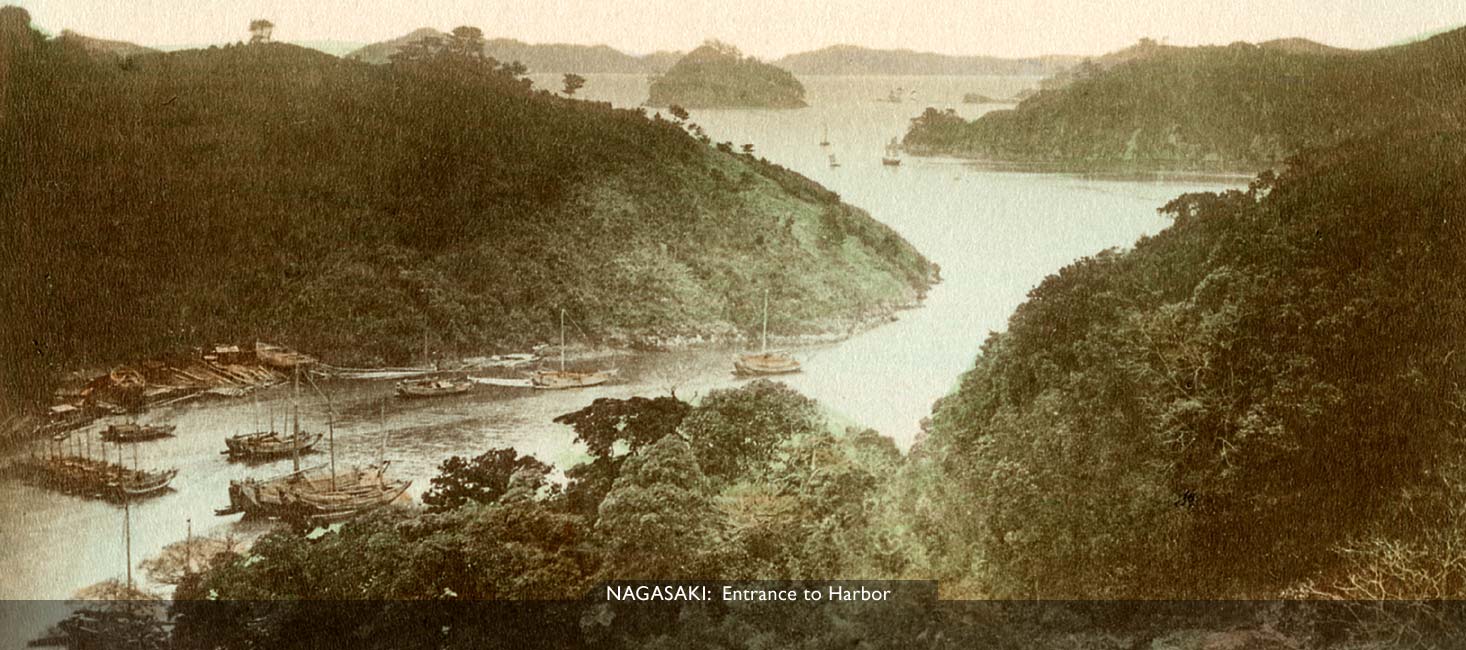Nagasaki
“The tradition goes that at Pappenberg, the precipitous little island at the mouth of the harbor, thousands of converts were forced by spear points into the sea, but the best scholars and authorities now discredit this wholesale horror, of which no trustworthy record exists. …
From 1641 the Dutch lived as prisoners on the little island of Deshima, where the porcelain bazaar now stands, suffering incredible restrictions and humiliations for the sake of monopolizing the trade of the country. Nagasaki’s children and beggars still follow strangers the shout, ‘Hollander san! Hollander san!’ as a remembrance of those first foreign residents.”

“A little before sunset we passed the island of Pappenberg, and came to anchor in the harbour of Nagasaki, one of the most beautiful in the world. …
Here for many years the Dutch had their trading port, to which once a year a vessel was permitted to come and exchange commodities. Here Christianity was introduced by St. Francis Xavier; here it was apparently eradicated by persecuting methods then in vogue throughout Christian lands…”
Eliza Ruhamah Scidmore, Jinrikisha Days in Japan, (New York, 1891) pp. 263–264
Albert Tracy, Rambles Through Japan Without a Guide, (London 1892) pp. 267–268



